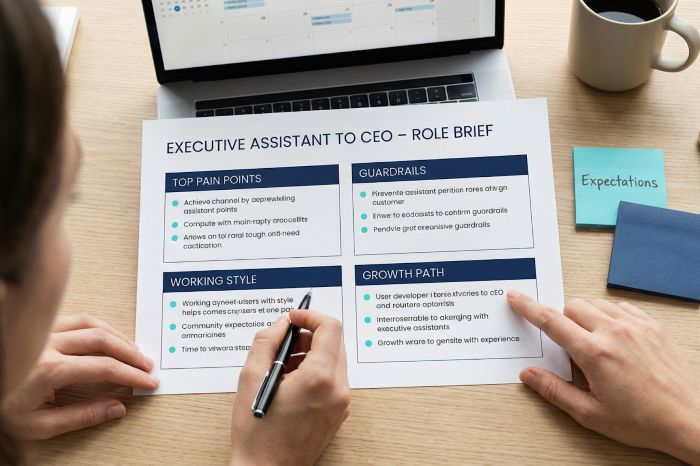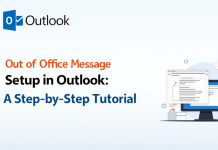Your calendar fills up fast when you’re the CEO. Harvard Business Review shadowed senior leaders for a full year and found they sit through 37 meetings a week—about 72 percent of their working hours. Layer on investor calls, board prep, and media requests, and it’s hard to carve out space for big-picture thinking. Partnering with our CEO-assistant staffing agency changes that: we pre-screen elite executive assistants who guard your schedule and act as a trusted extension of you.
Key Takeaways
- CEOs spend 85% of their time in meetings, requiring specialized assistants who act as confidential gatekeepers and can adapt to changing priorities.
- Traditional hiring struggles with the volume of generic applications, leading to costly mis-hires and prolonged searches for executive assistants.
- A CEO assistant staffing agency offers pre-vetted candidates, tailored screenings, and quicker hiring processes that save time and reduce hiring costs.
- Defining a CEO’s specific needs before searching helps in presenting suitable candidates who align with their working style and expectations.
- Structured onboarding and regular check-ins set up assistants for success, enhancing retention and allowing CEOs to focus on strategic goals.
Table of contents
Why Ceos Need a Different Kind of Assistant
Nearly 85 percent of a CEO’s work time goes to meetings, calls, investor briefings, and public events, according to a Harvard Business School time-use study that shadowed 94 chiefs for a full week. When every minute is public and high-stakes, the person guarding your calendar must master more than logistics.
Confidential gatekeeper. Your assistant reviews strategy decks, draft earnings scripts, and personnel moves before anyone else and treats each detail as top-secret.
Real-time triage pro. Priorities can flip three times before lunch; the right partner reshuffles the day without missing a beat.
Board-room ready. From directors to regulators, they greet power players first and set the tone for every interaction.
This level of pressure calls for judgment, emotional intelligence, and resilience paired with flawless organization. You need an ally, such as a CEO-assistant, who works at your altitude, not a generalist administrative helper.

The Limits of Traditional Hiring Approaches
A single corporate job post attracts about 250 résumés, yet only 4–6 applicants reach the interview stage, and one receives an offer glassdoor. According to SHRM, the average position stays open 42 days before a hire is made, and executive-level support roles often exceed that benchmark. SHRM also estimates the cost of a bad hire can top $240,000 once you count lost productivity and restart recruiting.
Why the process breaks down:
- Signal-to-noise. Superstar executive assistants get buried in a stack of generic administrative résumés.
- Soft-skill blindness. Résumé keyword scans rarely capture diplomacy, board-level poise, or read-the-room intuition.
- Leader bandwidth. CEOs and HR leaders seldom have hours to vet dozens of candidates in depth.
Pressed for time, companies often accept “good enough,” then pay twice, first during onboarding and again when the search starts over.
According to the CEO-assistant staffing agency C-Suite Assistants, a focused executive-assistant search, complete with an initial phone screen, a deeper video or in-person interview, and optional skills and language testing, usually wraps in just three to four weeks, far faster than the 42-day average for traditional hiring.

What A Ceo-Assistant Staffing Agency Brings to the Table
Partnering with a specialist firm does more than hand you a stack of résumés; it shortens your search and protects you from costly mis-hires. Robert Half reports that the average senior-leader search lasts 11 weeks. Retained executive-search partners who build talent benches ahead of time have cut onboarding time by 41 percent and lifted first-year retention by 26 percent in recent engagements, according to LinkedIn.
Here’s how those gains happen:
- Pre-vetted bench. We keep a live roster of executive assistants proven in high-pressure roles, so you meet finalists, not applicants.
- Role-specific screening. Our interviews probe board-level poise, sound judgment, and strict confidentiality, qualities generic applicant-tracking filters miss.
- Accelerated shortlists. Because candidates are engaged and reference-checked up front, you spend hours, not days, on interviews and often extend an offer after the second or third conversation.
For companies that hire a CEO assistant once a decade, this focus protects both time and reputation, saving you from the six-figure loss SHRM associates with a single bad hire.
Defining The Ceo’s Needs Before the Search

First, we co-write a one-page brief. Gallup’s 2025 Workplace report shows that when employees “clearly know what’s expected,” engagement jumps 33 points and burnout risk drops 47 percent. That lift begins with four conversations:
- Your top pain point. Is the biggest drag calendar chaos, investor prep, or project follow-through?
- Your working style. Ten-minute stand-ups or end-of-day memos? Slack pings or annotated decks?
- Guardrails. Set availability windows, decision rights, and expense limits so your assistant can act without hesitation.
- Growth path. Can this seat expand into chief of staff? Align ambition with runway now, before the first interview.
A concise brief built on those answers helps us filter faster and present CEO-assistant candidates who already work the way you do.
Evaluating Candidates with the Ceo in Mind
Résumé screening rarely predicts on-the-job impact. A broad meta-analysis published in the National Library of Medicine found that unstructured interviews correlate with performance at about ρ = 0.33, while structured, scenario-based interviews reach ρ = 0.42.
We shift the spotlight from job titles to real-time judgment:
- Run a day-one scenario. Ask the finalist to reorder a packed calendar after an investor call shifts; their logic reveals prioritization skill and discretion within seconds.
- Listen for alignment cues. Notice how they search for context and whether they mirror your cadence, such as concise bullet dashboards or narrative recaps.
- Stress-test values. Present a confidentiality dilemma—for example, a board member requesting early numbers—and observe how they draw boundaries.
Invite your HR lead or chief of staff to co-interview, because a second lens can spot culture gaps even sharp CEOs miss.
Setting Up the Relationship for Success
Great CEO-assistants thrive when day one feels intentional. Harvard Business Review reports that employees who receive a structured orientation are 69 percent more likely to stay for at least three years. We create that structure through four early moves:
- Map the landscape. Walk your assistant through upcoming board meetings, investor calls, and key stakeholder relationships so they see the chessboard, not only today’s pieces.
- Define information flow. Show exactly how you prefer briefs—whether bullet dashboards, voice notes, or 90-second Loom videos—so they can mirror your cognitive style from the start.
- Set decision rights. Clarify which calendar swaps, travel changes, or budget lines they may approve without a check-in; autonomy speeds progress and builds trust.
- Book cadence check-ins. A 15-minute daily huddle for the first month, then weekly or bi-weekly, lets you course-correct before small misalignments grow.
Conclusion
With a clear runway and frequent feedback, your new CEO-assistant ramps faster, keeping you focused on long-range strategy for your business instead of daily friction.











